Mite of the Month, September 2000
N283DE belongs to Michael McCrath of Seattle and is hangared at Arlington, WA.
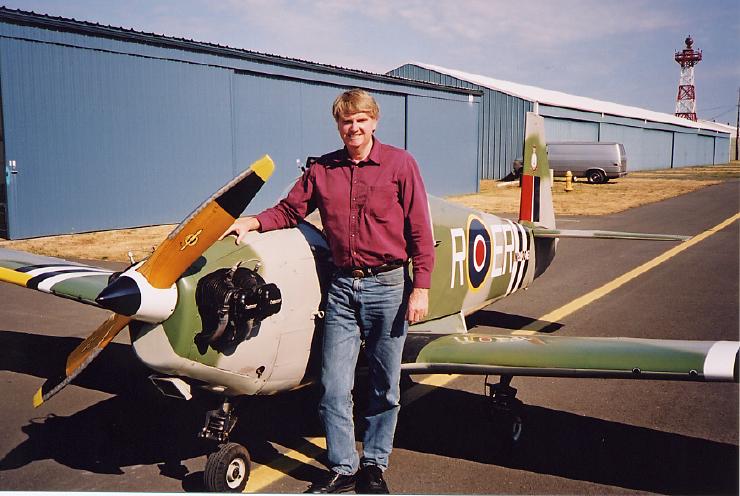
Michael writes:
"It was manufactured in Kerrville, Texas in July, 1953, number 283, as a "Wee Scotsman," one of the first Mites to come out of the Kerrville factory after Mooney moved from Kansas. The plane was sold to a gentleman in Pennsylvania, who soon licensed it under his FBO and began using it as a rental — the fate of so many Mites in those days.
"Over the years the plane changed hands four more times, finally ending up in Kansas as the property of Rick Render, Jr., an American Airlines pilot. Both Rick and his dad, Rick Sr., bought Mites at about the same time, and both Mites were re-furbished by the same man, an A&P, crop duster and all-around decent flying gentlemen name of Ira Rucker. He has his own private airstrip just on the outskirts of the Wichita Class C.
"Now, what Rick and his dad really needed in airplanes were not Mites, but a brace of Spitfires. Unfortunately, it turns out Spitfires are in very short supply on the North American continent, and besides, they're terribly expensive. So Rick and his dad did the next best thing (well, not "next best," perhaps, but another thing at any rate): they dressed up their Mites like identical Spitfires. After that, they had a wonderful time with them, I am told -- cavorting about the sky, pursuing the Hun, harassing ground targets...
"But in time, Rick, Jr. tired of his Mite, or at least needed to sell it and move on, and that's when I happened on the scene and bought it in September, 1996. (The flight up from Kansas to its present base at Arlington, Washington is a separate tale in itself. Hurricanes had been acting up in the gulf, and Rocky Mountain weather was not cooperating at all. Actually got snowed in -- twice.)"
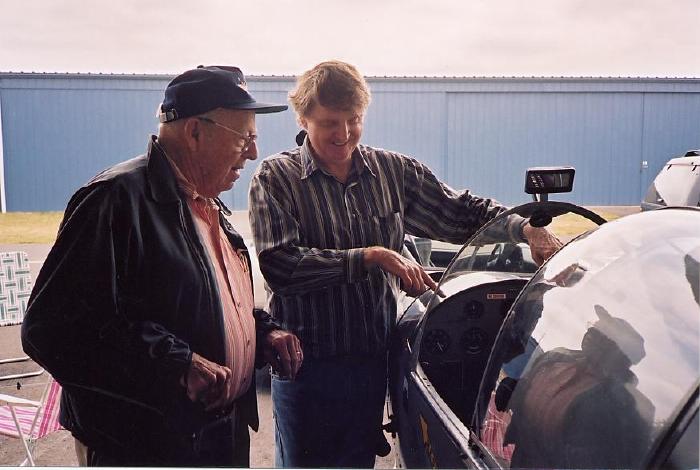
Mike shows a cockpit detail to Don Darrow.

The wood Flottorp propeller doesn't show the least signs of wear.
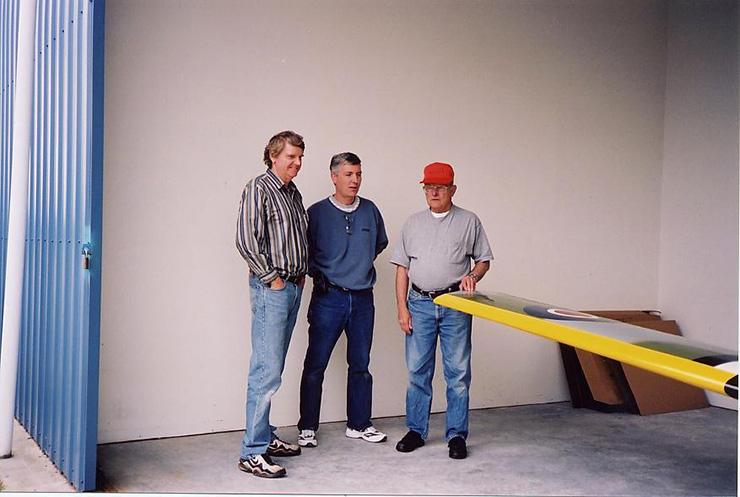
Mike, Dave Rutherford and Gil Gilbert admire the Mite in its Arlington hangar.
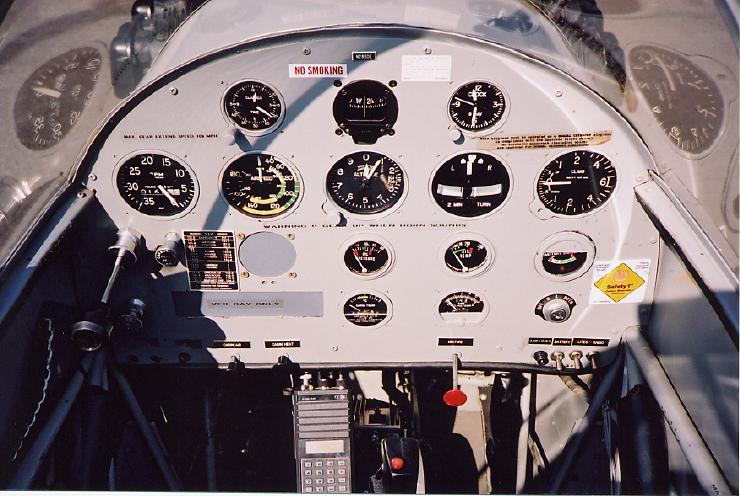
Notice the Icom radio held in place by Velcro strips.
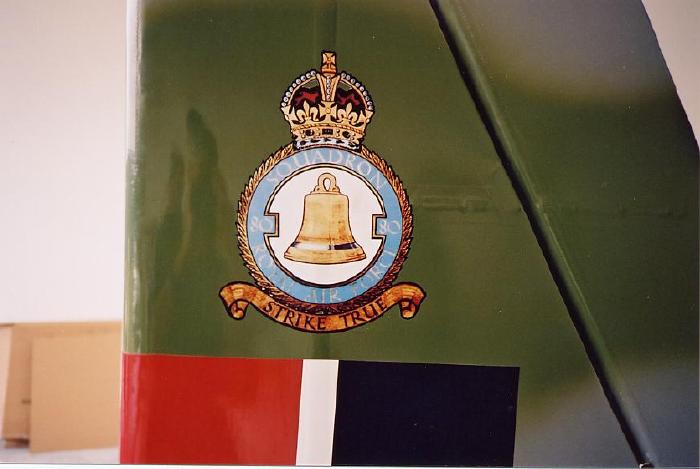
N283DE is done up in the markings of a WWII Spitfire squadron.
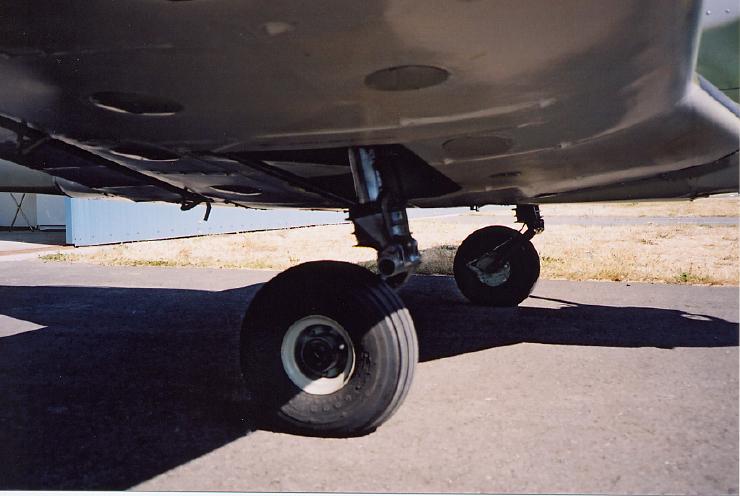
Slightly enlarged wheel openings are required for a very successful mod: five-inch main wheels.
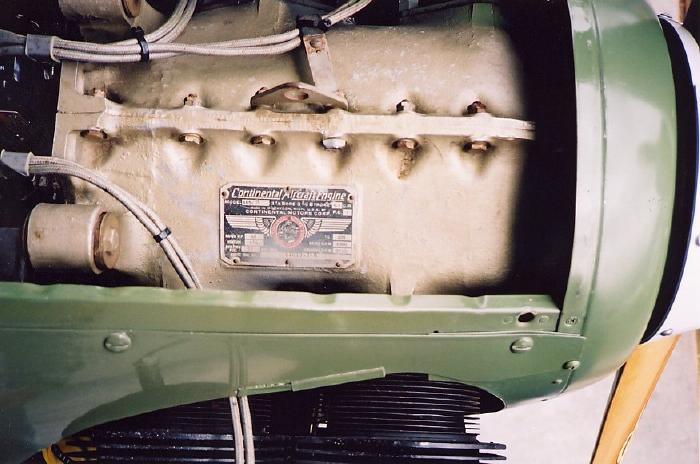
Both Michael and his elderly but low-time Continental engine have benefited from the assistance of the high-quality oil filter

"Not long after acquiring my new treasure I did some touch-ups on the paint, adding the invasion stripes and squadron insignia on the tail -- the latter after much paperwork and numerous misunderstandings with the RAF. It now is a fairly accurate representation of an 80 Squadron Spitfire like those based in Hong Kong from the end of the war to 1952. The call letters are wrong, but I so far haven't had the heart to remove the old "RER" (Rick E. Render).
"Turns out Rick, Sr. finally sold his Mite, too. Probably got lonely chasing Jerry all by himself. Actually, he ran out and bought a CJ6, so he has a rather more authentic warbird at this time. At an rate, Rick Sr.'s. was purchased by Steve McGuire of Oklahoma last year and became the first "Mite of the Month." (See Articles page)
"And my Mite now? Well, the panel's about to be changed, the electricals will be pumped up by an alternator, and it is soon to get an new engine. The plane has had a total of 600 hours on engine and airframe since 1953. Knowing that, you can fill in the rest of the sordid details about why the engine didn't reach TBO, I am sure."
"As to the oil filter: it was installed shortly after I bought the plane. Frankly, I've never understood why aircraft engines aren't required to have oil filters. I certainly wouldn't run my car without one, only because I don't want the unpleasant experience of pulling over to the curb someday with an ruined engine. And while that would be a nasty and expensive inconvenience in a car, it of course could threaten disaster in an airplane. Perhaps some who have flown many more hours and many more years than I could counter my experiences, but personally I have yet to discover a curb-side rest stop area in the sky.
"The oil filter assembly I chose was an Airwolf, simply because it has a good reputation; the folks at Airwolf were very accommodating and worked with me (this is not an endorsement, by the way, I am sure there are other equally good oil filter assemblies on the market)), and the device can be mounted most anywhere under the cowling.
"Well, it turns out the filter hadn't been on the plane long before it suddenly decided to pay for itself. I had just turned final at Arlington airport, was all lined up and pointed correctly, when suddenly I began to hear a distinct "tick-tick" noise from up front. When I got on the ground I taxied directly to my mechanic's hangar, all the while ticking like an old pocket watch, and together we tore into the engine.
"Removal of the accessory case revealed abraded and galled oil pump gears (the source of the ticking), and a rather curious but quite distinct circle etched in the accessory case around the point where the camshaft protrudes from the back of the engine. Seems a tiny piece of tie wire that had been sticking out of the cam and rubbing on the accessory case for Mooney knows how long finally decided to let go. It was flung through the oil pump gears and its shards were spit into the oil line. From there they journeyed directly to the filter where we soon found them. The pieces were too small to have been trapped in the stock oil screen, so without the filter they certainly would have had their way with the cylinder walls, bearings, etc., and I would have been searching out a new engine then and there. Frankly, the installation process, including the paperwork, the 337, the scary meetings with the FAA "suits" (they go about the land two-by-two, like like the Devil's own missionaries), were experiences I don't recommend to the faint of heart. The collective effort, however, paid off the in end and I think I'll just keep my oil filter, thanks all the same."
"As to the Flottorp prop: I have seen no record or other annotation in the engine logs indicating a change of props since the aircraft was new. I can only conclude that, as unlikely as it may seem, this is original equipment. It's a 64/65 pitch -- pretty standard for Mites -- that allows about 1850 RPM maximum run-up on the ground. It's definitely a cruise prop with the A65 engine, and allows 950-1000 FPM rate of climb at sea level, with a sea-level cruise of about 115 MPH. At 10,000 ft. it trues out at around 130 MPH, which is as advertised. I highly recommend a wooden prop for the Mite. It's many pounds lighter than any metal prop on the market, which is critical on a plane such as the Mite that's constantly flying right around gross weight, and until (if ever) some of the more exotic multi-bladed carbon fiber jobs get certified, it's about the best."
"When I purchased the plane it contained a wretched old 360-channel device that was, in September of 1996, becoming obsolete before my eyes and therefore had to leave the scene, pronto. Since the plane has a rudimentary electrical system, consisting of a battery, a bundle of spare wires and no generator/alternator, I didn't want to tax it by introducing a new, amp-sucking panel mounted unit at that time. So, after sufficient groveling to my mechanic and a promise to fly right and do a good deed every day, he was persuaded to build me a little Velcro-covered bracket in front of the control stick for my hand-held. We nestled a fiber antenna inside the rear of the plane behind the gas tank, wired in the headset jacks and a recharger unit, hard-wired a 10-watt amp into the line, and I was set. Now, when I leave the plane parked I just pull the radio out (a ten-second operation) and take it with me. True, sometimes it's a bit of a bother to explain over and over again why you're carrying a radio in the restaurant: ("Are you the security guard? My car won't start" and..."Are ya packin' heat? I don't want no trouble" etc.), but it's easily overcome. Besides, if you like attention, it's a sure way to attract new friends:
Michael forwarded the following aerial photo on September 25, 2000 along with comments by Jesse H Moore V, who took the photo.
"It's almost midnight ... just finished Low Resolution scans of the Seattle negatives.... Haven't really looked at them hard, but this one jumped out at me. Always a relief to know you've got at least _one_ decent picture. "This is a very low-resolution scan on which I did a quickie auto-color balance -- gray on the plane read exactly 50% gray, so the colors ought to be just about dead-on. (Your computer screen may not render them correctly.) Will report more after I've had some more time to fiddle with the negatives. Inserted file is 44KB. "Looking at the negs, was pleased to see my calculations of the degree of prop rotation I would get were correct. (Pleased being a relative term, since if I had my choices, I'd get more prop blur, but that means lower shutter speed, which won't work with a 200mm lens stuck out the window of a vibrating airplane)."
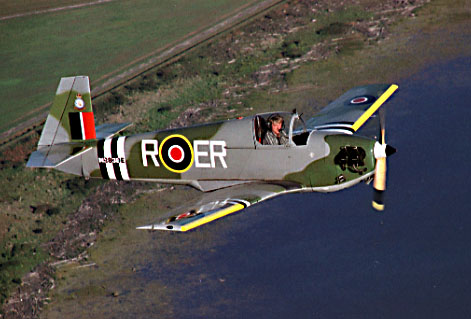
As a matter of history, this Mite was designated N4115 in the late 60's when it was owned by Aldo J. Losapaluto of Belle Rose, NY. It was N528KW in 1994 when first registered to Richard E Render of Topeka, KS. Now, the 'D' and 'E' in the N-number represent Michael's two sons, Doug and Eric.
August 22, 2000